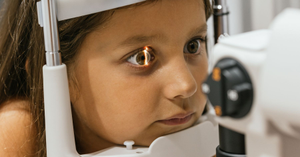Welcoming a baby into the world is a time of immense joy and hope. But sometimes, a baby may be born with conditions that require urgent medical care. One such condition is Congenital Diaphragmatic Hernia (CDH), a rare but serious birth defect that affects the diaphragm and lungs, making breathing difficult after birth.
This guide aims to gently walk parents, caregivers, and medical learners through what CDH is, how it is diagnosed, and what treatment and care involve. Though it can be overwhelming to hear such a diagnosis, advances in neonatal care have improved survival and outcomes significantly.
What is Congenital Diaphragmatic Hernia (CDH)?
CDH is a condition present at birth (congenital) where there is a hole or defect in the diaphragm, the muscle that separates the chest cavity from the abdominal cavity. Because of this opening, organs like the intestines, stomach, liver, or spleen can move up into the chest, crowding the space meant for the lungs.
This causes two major problems:
- Underdeveloped lungs (pulmonary hypoplasia) — which may struggle to function properly.
- Displacement of the heart and lungs — affecting blood flow and oxygenation.
CDH occurs in about 1 in every 2,500 to 5,000 live births, and the severity can vary depending on how early it’s detected and how much the lung development has been affected.
Types of CDH
- Left-sided CDH (Bochdalek hernia) – Most common (over 80% of cases).
- Right-sided CDH – Less common, but often more serious.
- Anterior or Central CDH (Morgagni hernia) – Rare.
What Causes CDH?
The exact cause is often unknown, but CDH may be due to:
- A genetic mutation affecting fetal development
- Sporadic developmental error in diaphragm formation during the first 8–10 weeks of pregnancy
- Sometimes seen in association with other congenital syndromes or heart/lung defects
CDH can occur as an isolated defect or alongside other anomalies.
Signs and Symptoms of CDH in Newborns
Babies with CDH typically struggle to breathe shortly after birth. Signs include:
- Severe difficulty breathing (despite a healthy heartbeat)
- Cyanosis (blue skin due to low oxygen levels)
- Sunken abdomen (due to organs being in the chest)
- Rapid breathing and flaring of nostrils
- Decreased breath sounds on the affected side of the chest
In some mild or undiagnosed cases, CDH may not be detected until weeks or months later when the child presents with respiratory issues or feeding problems.
Prenatal Diagnosis: Can CDH Be Detected Before Birth?
Yes. CDH is often diagnosed during routine second-trimester anomaly scans (18–22 weeks).
Signs on prenatal ultrasound may include:
- A visible stomach or bowel in the chest cavity
- Shifting of the heart to the opposite side
- Underdeveloped lungs
- Abnormal chest-to-abdominal organ ratio
In high-risk cases, fetal MRI or echocardiography may be used to assess the severity and associated anomalies. Measuring the Lung-to-Head Ratio (LHR) helps predict the baby’s chance of survival after birth.
Immediate Post-Birth Management
CDH is a medical emergency. If detected prenatally, delivery is usually planned at a specialised neonatal centre with a NICU and pediatric surgery team.
Key Steps in Early Management:
- Avoid bag-mask ventilation (to prevent inflating bowel in the chest)
- Intubation immediately after birth to secure the airway
- Mechanical ventilation or high-frequency oscillatory ventilation (HFOV)
- Sedation and careful monitoring
- Placement of a nasogastric tube to decompress the bowel
In severe cases, babies may need ECMO (Extracorporeal Membrane Oxygenation), a heart-lung bypass machine to support oxygenation while the lungs recover.
Surgical Treatment of CDH
Surgery is typically done once the baby is stable, usually within the first few days to weeks after birth.
What the surgery involves:
- Returning the abdominal organs to their proper place
- Closing the hole in the diaphragm with sutures or a synthetic patch if the defect is large
The timing and approach depend on the baby’s lung function, blood pressure, and overall stability.
Prognosis: What to Expect
The outcome in CDH varies widely depending on:
- The size of the diaphragmatic defect
- The degree of lung development
- Presence of other abnormalities or genetic syndromes
- Response to medical and surgical treatment
With expert care, survival rates have improved to 70–90% in many centers for isolated left-sided CDH. However, long-term care may be needed for:
- Chronic lung disease
- Feeding difficulties
- Growth delay
- Hearing problems
- Neurodevelopmental delays
Support and Long-Term Follow-Up
Babies born with CDH need regular follow-up with:
- Pediatric pulmonologists for lung function
- Gastroenterologists for reflux or feeding issues
- Speech and occupational therapists
- Pediatric surgeons
- Cardiologists (especially if heart issues are present)
Emotional support for parents is equally crucial. Families may benefit from counseling, parent support groups, and connection with CDH foundations that offer resources and hope.
Conclusion: Early Detection and Care Can Change Outcomes
Congenital Diaphragmatic Hernia is a complex condition, but with early diagnosis, skilled medical teams, and informed parenting, babies can survive and thrive. The journey may be intense, but you are not alone. Many families have walked this path and emerged with strength, gratitude, and resilience.
Always trust your instincts, ask questions, and partner closely with your pediatric team. Awareness and timely care are the best gifts we can offer these tiny, courageous hearts and lungs.








Be the first one to comment on this story.